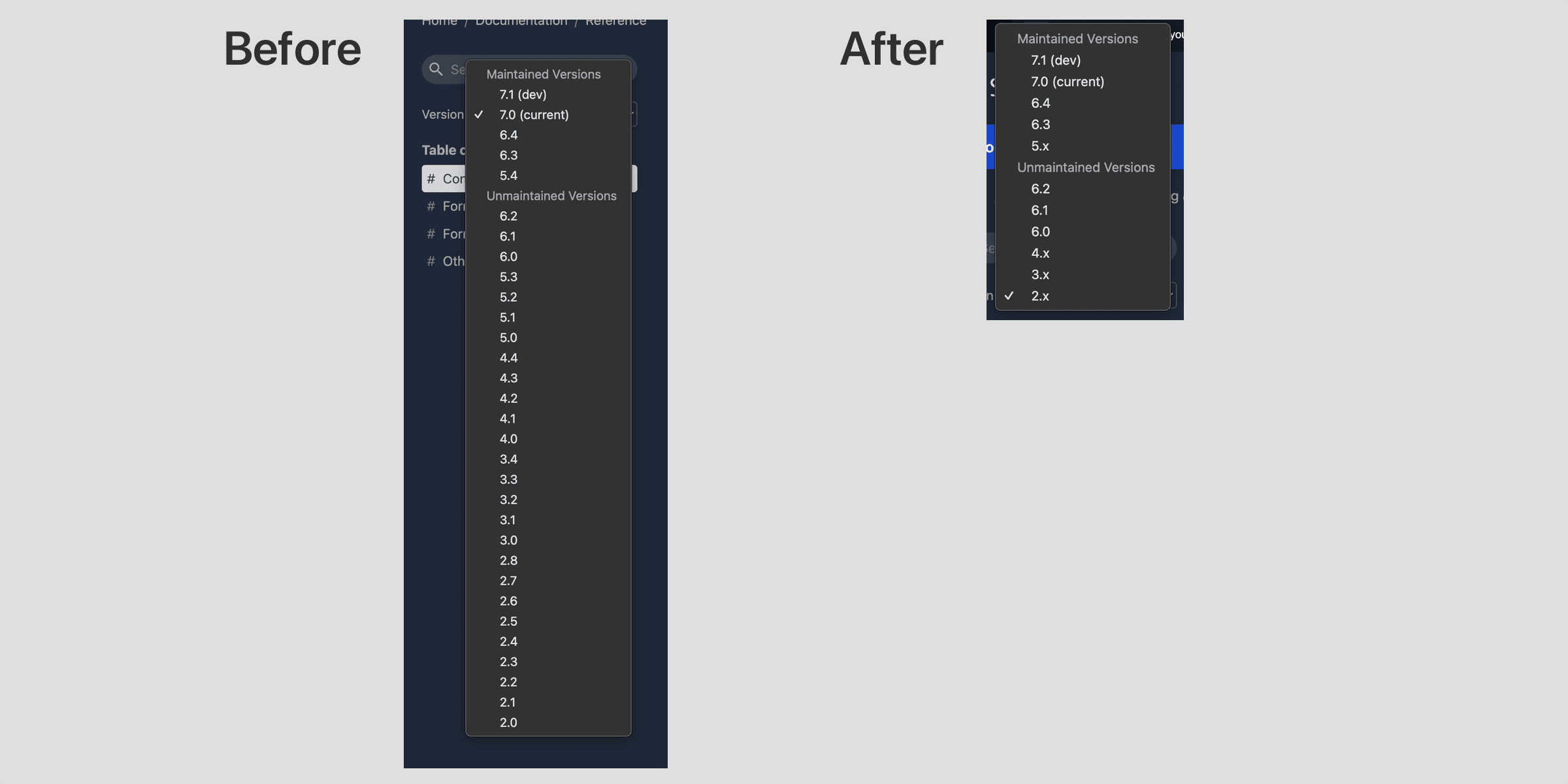Symfony Documentation is managed separately from code, on its own symfony/symfony-docs repository. This eases the contributions to code/docs and allows to have different reviewers and maintainers for each.
Symfony Docs follow the same release process of Symfony Code and we also use the exact same branches. That's why on symfony.com, the documentation shows a version selector that matches all the Symfony branches, from 2.0 to the latest one (these days, that's 7.1).
This approach worked well for the project, but it's starting to become an issue as more and more Symfony versions are released. Today, this selector shows up to 31 different Symfony versions.
Moreover, because of how Symfony is developed, any version of any branch contains all the features of the previous versions of that same branch. This happens for docs too: e.g. the docs for 3.4 (the last version in 3.x branch) contains the docs of all the features in 3.4, 3.3, 3.2, 3.1 and 3.0.
That's why, starting today, we're simplifying the versioning of Symfony Docs.
The oldest versions (2.0 - 2.8, 3.0 - 3.4, 4.0 - 4.4 and 5.0 - 5.4) have been
folded into a single generic version (2.x, 3.x, 4.x and 5.x)
that contains the docs of the last version of each branch (2.8, 3.4,
4.4 and 5.4). The following image shows the doc version selector before/after
these changes:
We've set up URL redirections for the new .x versions to not break any
existing link. Also, the generic .x versions still contain all the
"Introduced in 4.1", "Introduced in 5.3", etc. notices that explain in which
exact version each new feature was introduced.
In addition, we'll keep unfolded the versions of the two most recent Symfony
branches (that's why you'll still see 6.0, 6.1, etc. in the selector).
When Symfony 8.0 is released in November 2025, we'll fold Symfony 6 docs into
6.x and so on.

🥳 Great!
Amazing, thanks a lot :)
Small change with great user convenience, thanks! As far as I'm concerned, Symfony has one of the best documentation version management.